Sugar Maple: Acer saccharum
What is Acer saccharum and what are some of its relatives?
Hierarchical Classification of Sugar Maple Trees
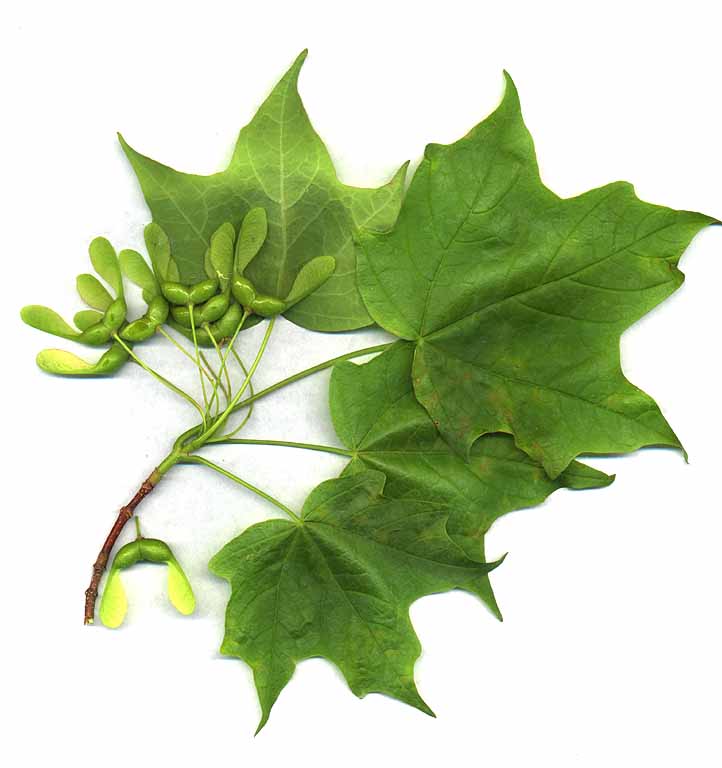 Domain—Eukaryota
Domain—Eukaryota
Organisms placed under this classification possess membrane bound organelles and a true nucleus.
Kingdom—Plantae
The kingdom Plantae consists of multicellular organisms that are autotrophic and contain cell walls made of cellulose.
Subkingdom—Tracheobionta
These organisms are considered vascular plants containing tissues necessary for conducting water and essential nutrients to the plant.
Super Phylum—Spermatophyta
Organisms under this category are considered the seed plants. In other words, they produce seeds as a means of distributing their offspring.
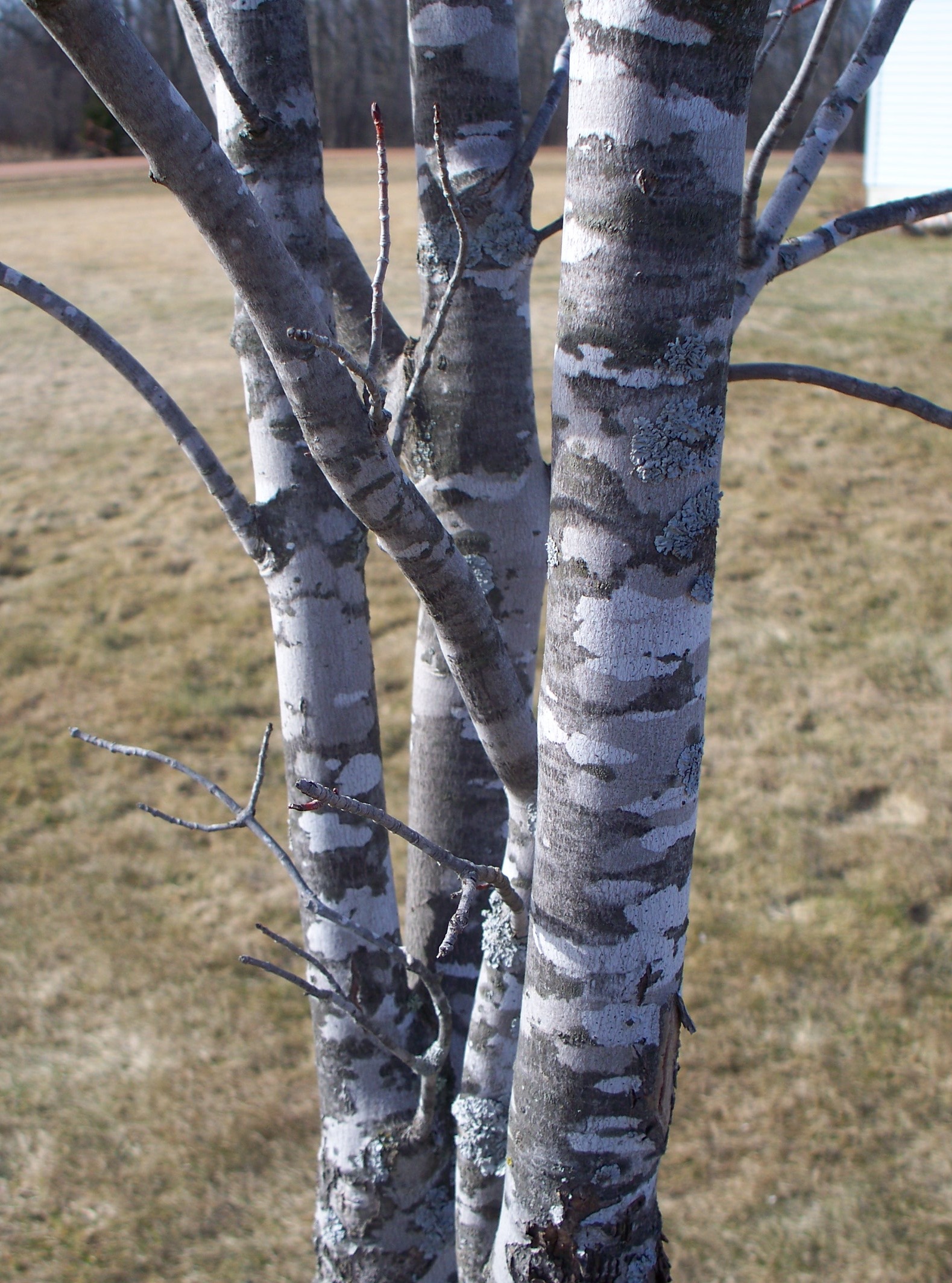 Phylum—Magnoliophyta
Phylum—Magnoliophyta
These organisms, though more commonly known as angiosperms, are the flowering plants. They are distinguished from other seed plants in that they consist of seeds derived from ovarian tissue.
Class—Magnoliopsida
Organisms under this category possess two cotyledons, leaves with net-like veins (as opposed to parallel veins), vascular tissue arranged in a ring (as opposed to scattered), flower parts in multiples of four or five, and others.
Subclass—Rosidae
These organisms are known for the fact that they possess many stamens that are usually more numerous than there are petals on the flower itself.
Order—Sapindales
Organisms under this category include the shrubs, woody vines, and trees. They possess compound leaves meaning multiple leaves protrude from the same leaf branch or stalk.
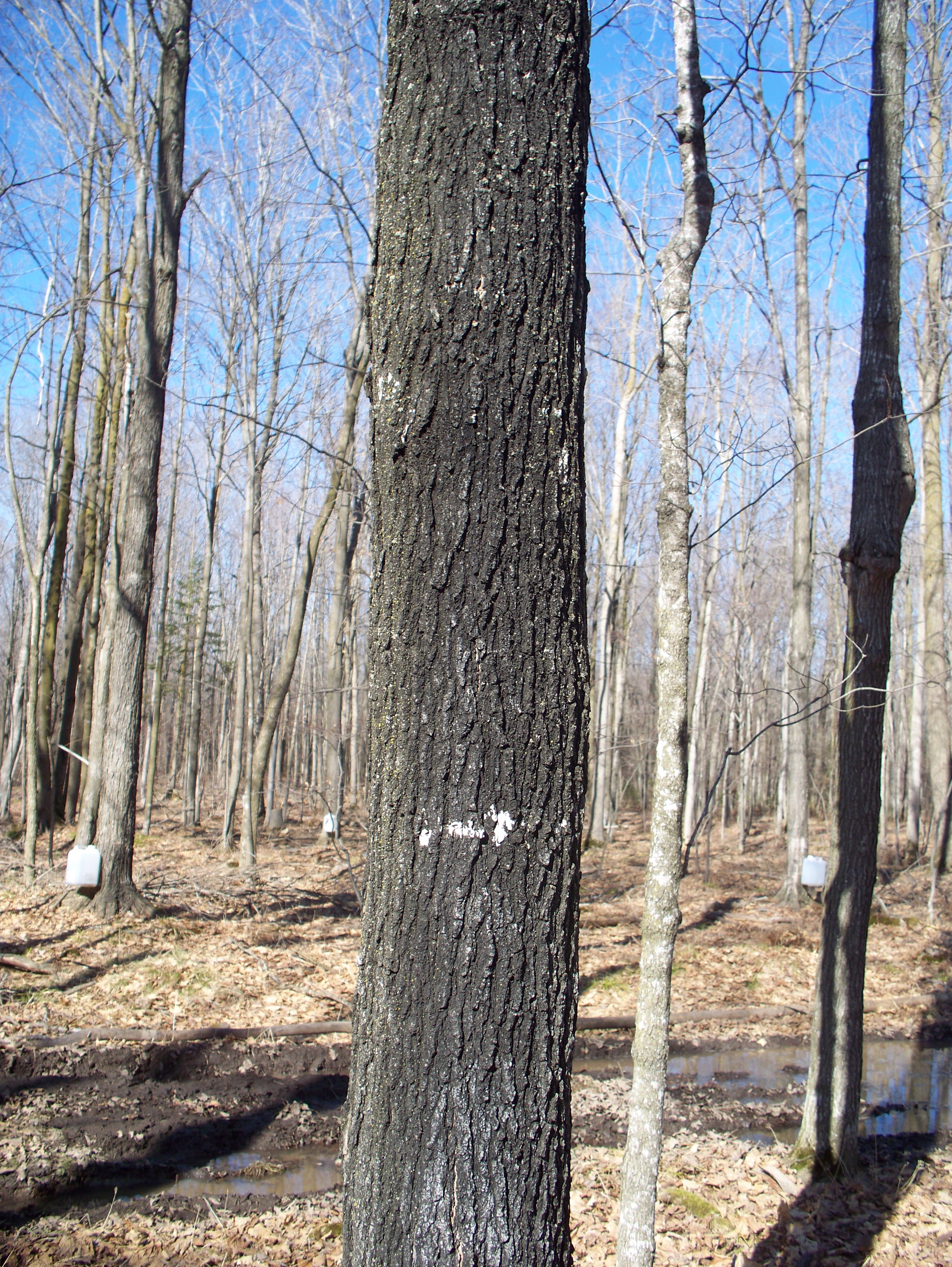 Family—Aceraceae
Family—Aceraceae
This group of organisms is more commonly referred to as the Maple Family. They are composed of mostly deciduous trees or shrubs. Most of the members are extremely shade tolerant as well.
Genus—Acer
Acer means Maple in Latin. Plants under this category possess lobed leaves having characteristic points at their tips and fruits that are winged.
Species—saccharum
The word saccharum means sweet. The species Acer saccharum, commonly known as the Sugar Maple, is a flowering tree that that is found in northeastern North America and eastern Canada. They possess deciduous leaves with a characteristic 5 lobed appearance. This species also is known to have brilliant fall color patterns ranging from yellow to red/orange.
Subspecies
Acer saccharum can also be broken up into two different subspecies. They are Acer saccharum Marsh var. saccharum and Acer saccharum var. schneckii Rehder. The focus of this webpage though will be on the Acer saccharum species in general.
Phylogenetic Trees
The following Phylogenetic Tree represents that of Acer saccharum from Domain to Class.
The next Phylogenetic tree shows all of the relatives of Acer saccharum and its subspecies.
To
learn more about a few of these species in comparison click
here.
How to Identify Acer saccharum
Leaves
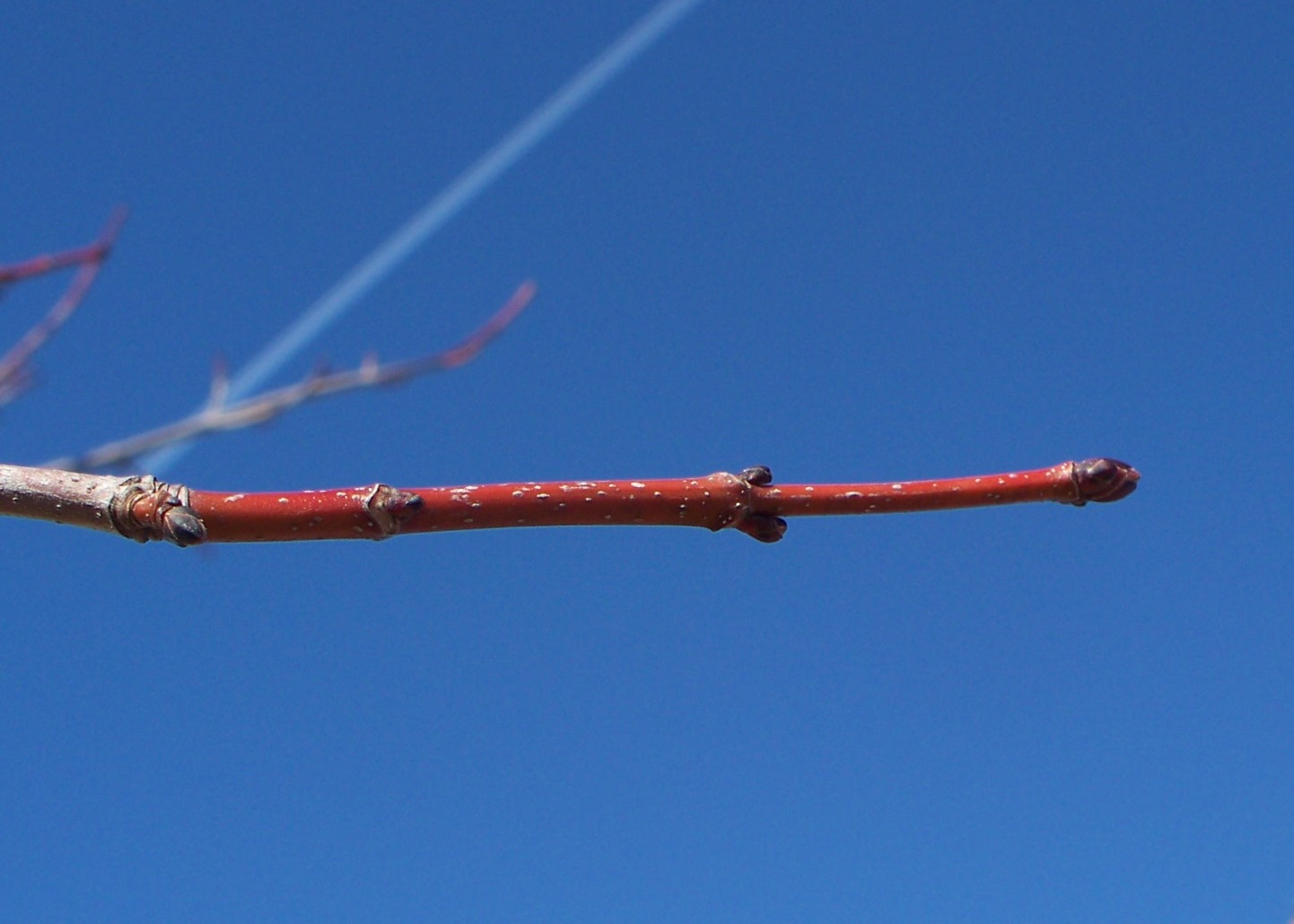 The leaves of the Sugar Maple are typically 3 to 6 inches long
exhibiting a branching vein pattern. They possess 5 lobes that are
connected by a “U shape” versus a “V shape” of other maple trees such as
the Red Maple. The upper three lobes are larger than the two lobes
toward the base of the leaf. The upper three
lobes also possess
characteristically deep indentations. During the summer months
the Sugar Maple leaves are dark green on their top surface and a paler
green underneath. During the fall months the leaves begin to display
a whole range of colors from yellow to dark red. To learn more about how
this happens refer to the Nutrition page.
The leaves of the Sugar Maple are typically 3 to 6 inches long
exhibiting a branching vein pattern. They possess 5 lobes that are
connected by a “U shape” versus a “V shape” of other maple trees such as
the Red Maple. The upper three lobes are larger than the two lobes
toward the base of the leaf. The upper three
lobes also possess
characteristically deep indentations. During the summer months
the Sugar Maple leaves are dark green on their top surface and a paler
green underneath. During the fall months the leaves begin to display
a whole range of colors from yellow to dark red. To learn more about how
this happens refer to the Nutrition page.
Bark
Younger trees possess bark that is smooth and typically light brown or gray. As the tree ages the bark becomes rough with long and irregular curling that peels on the side. The bark color also becomes darker varying from brown, gray, and even black.
Twigs
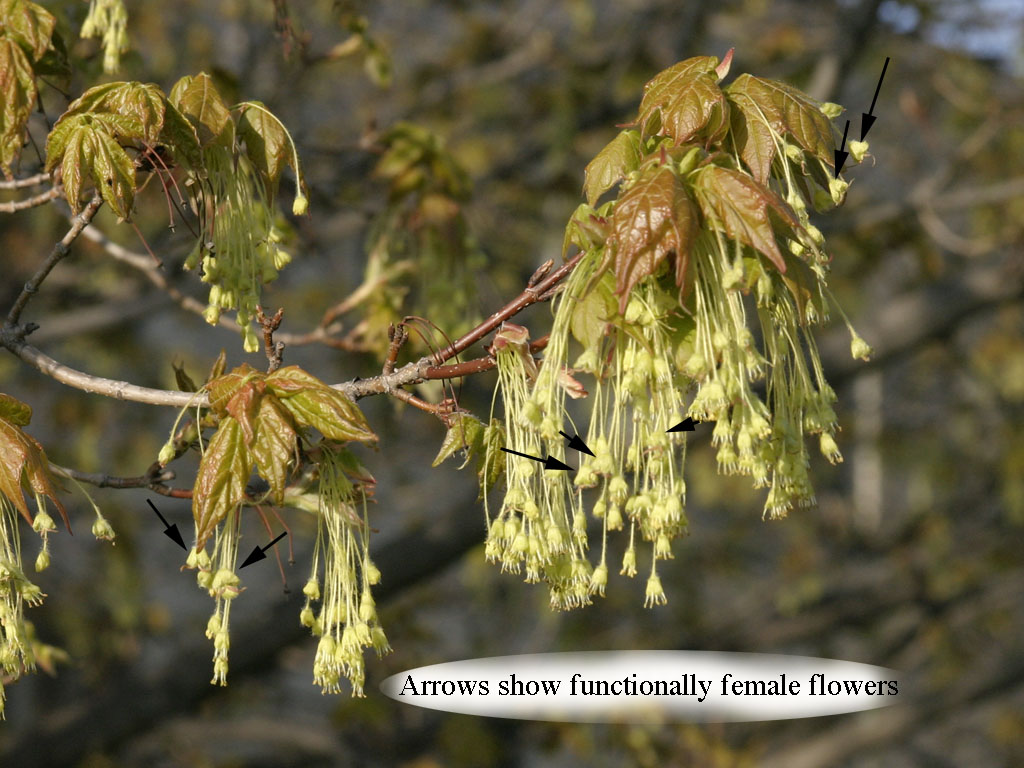 The twigs of the Sugar Maple are slender with leaves arranged on
opposite sides along the length of the twig. The twigs are reddish and
brown in color and posses many stomata, which are small pore like
openings that aid in the release and uptake of gases to and from the
environment. The buds, which are also arranged on opposite sides of the
twig are sharply pointed and brown in color. The terminal bud on the
twig is usually larger than the other buds lying along the length of the
twig.
The twigs of the Sugar Maple are slender with leaves arranged on
opposite sides along the length of the twig. The twigs are reddish and
brown in color and posses many stomata, which are small pore like
openings that aid in the release and uptake of gases to and from the
environment. The buds, which are also arranged on opposite sides of the
twig are sharply pointed and brown in color. The terminal bud on the
twig is usually larger than the other buds lying along the length of the
twig.
Fruit
The fruit of the Sugar Maple consists of a double samara with paper-like wings approximately 1 inch long. The structure is horseshoe shaped and appears in clusters on the tree. The young fruits are green which later mature to a brown color in the fall. To learn about the advantages to having winged seeds, check out the Adaptations page.
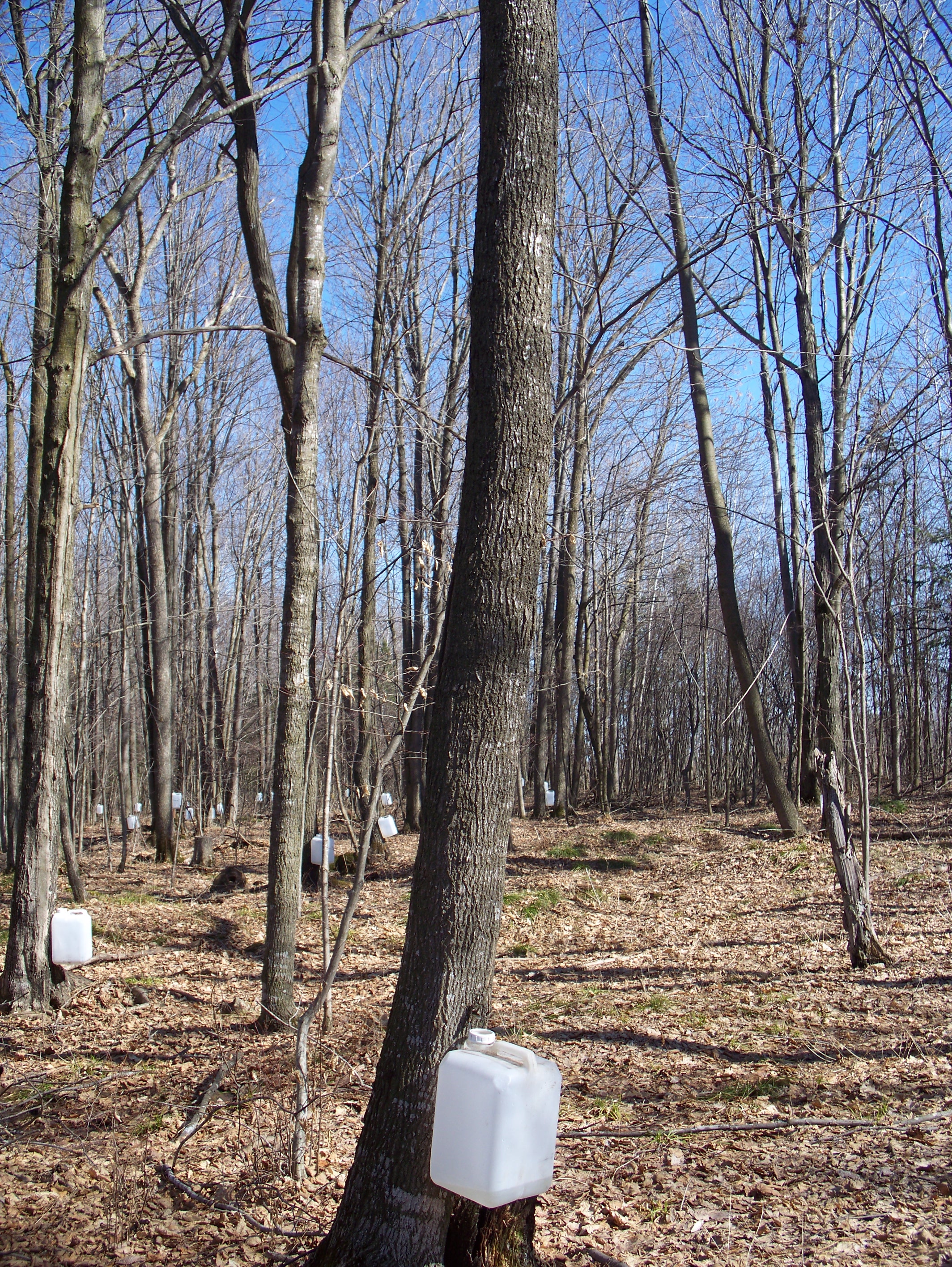 Flowers
Flowers
Sugar Maple trees are monecious, meaning that they possesses male and female flowers on the same plant. These trees produce these small yellow-green flowers in early spring. The flowers appears as long stalks that form in clusters. To learn more, refer to the Life History page.
Other Characteristics
Sugar Maple can also be identified by its clear sap whereas some other similar species have white sap. The Sugar Maple is also a very large tree that can reach heights of 90 to 120 feet.
Now that you can identify Acer saccharum, check out the Habitat page to find out where you can find it. To return to the Acer saccharum Homepage click here.
